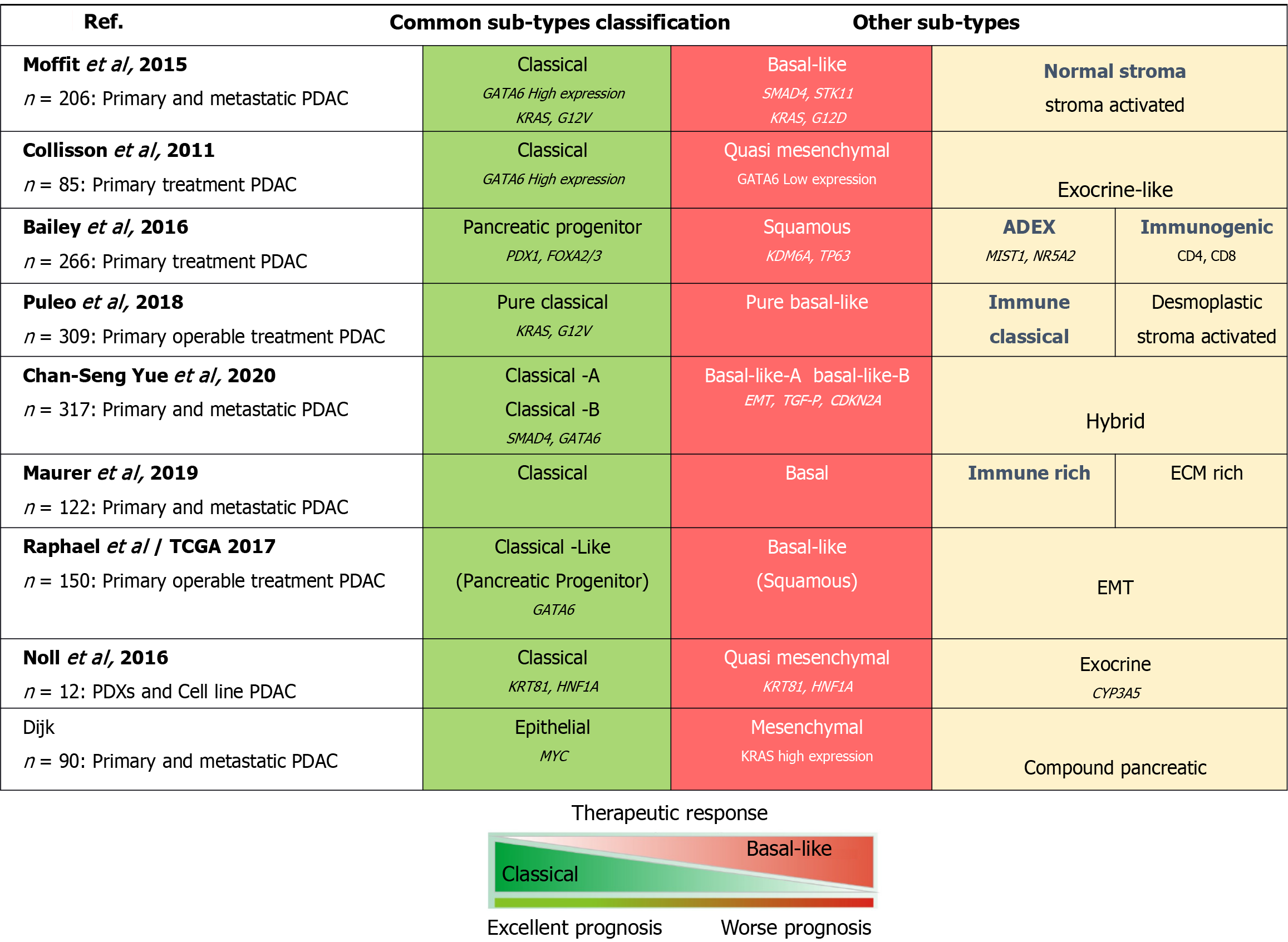Copyright
©The Author(s) 2025.
World J Gastrointest Oncol. Jul 15, 2025; 17(7): 103337
Published online Jul 15, 2025. doi: 10.4251/wjgo.v17.i7.103337
Published online Jul 15, 2025. doi: 10.4251/wjgo.v17.i7.103337
Figure 2 Comparison of different transcription subtype classifications of pancreatic ductal adenocarcinoma tumors.
Subtype classifications of pancreatic ductal adenocarcinoma tumors have been identified and characterized according to transcriptomic signatures and/or protein expression profiles. Findings from previous studies. Classical (excellent prognosis, left) or basal-like (worse prognosis, right) phenotype. The genetic determinants of the proposed classes of subtypes have been proposed to drive transcription phenotypes, including enrichment of GATA binding protein 6 in classical subtype tumors and Kirsten rat sarcoma oncogene in basal-like pancreatic ductal adenocarcinoma tumors. PDAC: Pancreatic ductal adenocarcinoma; GATA6: GATA binding protein 6; KRAS: Kirsten rat sarcoma oncogene; PDX1: Pancreatic duodenal homeobox-1; KDM6A: Lysine-specific demethylase 6A; NR5A2: Nuclear receptor subfamily 5 group A member 2; EMT: Epithelial-mesenchymal transition; TGF: Transforming growth factor; ECM: Extracellular matrix; KRT81: Keratin 81; HNF1A: Hepatocyte nuclear factor 1 alpha.
- Citation: Hendi M, Zhang B, Mou YP, Cai XJ. Importance of landscape exploration and progress in molecular therapies and precision medicine for pancreatic ductal adenocarcinoma. World J Gastrointest Oncol 2025; 17(7): 103337
- URL: https://www.wjgnet.com/1948-5204/full/v17/i7/103337.htm
- DOI: https://dx.doi.org/10.4251/wjgo.v17.i7.103337









